

In the era of big data, the importance of information security is unparalleled. Obtaining the ISO 27001 certification signifies that Forex Forest Limited has established and maintained a world-class information security management system, ensuring that personal data and privacy are protected with the highest standards. Users and students can rest assured while using our platform, as we possess the capability to prevent various potential risks and threats.
Multi-layered security measures, including advanced encryption technology, strict access controls, and continuous monitoring mechanisms, ensure the safety of data. Our professional security team constantly monitors the system's operation, responding swiftly to any potential threats. Additionally, regular security audits and risk assessments are conducted to continuously improve information security strategies, addressing the increasingly complex challenges of cybersecurity.
Obtaining the ISO 9001 certification highlights Forex Forest Limited's relentless pursuit of high-quality education and exceptional service. We are committed to providing the best learning experience, continuously optimizing courses and services to ensure that every student enjoys the highest quality resources.
Our quality management system is customer-centric, ensuring that products and services consistently meet the highest standards through systematic processes and continuous improvement methods. We value every student's feedback, using it as an essential basis for improving our services. Every suggestion and opinion drives us to further enhance course quality and service levels, ensuring that goals are achieved in the best possible learning environment.
These certifications are not only a recognition of our efforts but also a reward for the trust and support of our students. The trust of our students is the driving force behind our continuous progress and pursuit of excellence. These achievements would not have been possible without the support and participation of every student; their success is also our honor. We are grateful to every student who has chosen our platform. It is because of this support and trust that we can keep moving forward and achieve these remarkable accomplishments. This will inspire us to continue striving, enhancing our service levels, and providing an even better learning experience.
Algo Forest will continue to work diligently, continuously enhancing our platform to ensure that we provide a safe, reliable, and high-quality learning and service environment for our students. In the future, Forex Forest will adhere to its customer-centric philosophy, continuously optimizing our information security and quality management systems to address the ever-changing market environment and technological challenges. Our goal is to become an industry benchmark, providing the highest quality services and support to all students and clients.
We will continue to invest in innovation and technology, maintaining our leading position in the industry. Our technical team and educational experts will collaborate to develop and introduce the most advanced educational technologies and resources, improving course quality and the student learning experience. We will also strengthen our collaboration with international certification bodies to ensure that our management systems consistently comply with the latest international standards and best practices. Let us move forward together and create a brighter future! Once again, we thank all our students and clients for their trust and support, and we look forward to continuing to provide outstanding services and educational resources to more people.
Discover the basics of AI trading, its applications in markets like forex and cryptocurrencies, and how it can improve trading efficiency. Learn about AI trading strategies, risk management, and how to get started with this innovative approach to investing.
AI trading leverages artificial intelligence and machine learning algorithms to analyse vast amounts of data, identify trends, and make real-time trading decisions. Unlike traditional trading, which relies on human judgement, AI trading relies on data-driven decisions, reducing human error and potentially increasing profitability.

We are especially seeing more instances of AI trading in the UAE region. As the region is increasingly becoming a hub for fintech and AI-driven solutions, traders in the region are increasingly turning to the use of AI in trading to stay competitive in today's volatile markets.
AI trading algorithms use vast amounts of historical and real-time data to make informed decisions.
By relying on algorithms, AI reduces human bias and emotion, aiming for precision and consistency.
AI trading systems can process large volumes of data and execute orders across various markets almost instantaneously.

AI trading involves multiple components and processes that work together to analyse market data and execute trades efficiently.
AI systems gather data from a variety of sources, including stock prices, forex rates, and economic news. This data is then analysed using machine learning techniques to identify patterns and predict future market movements.
Automated trading systems execute trades based on pre-set criteria, removing the need for constant human monitoring. Traders can set specific conditions for buying or selling, such as price levels, trading volume, or specific technical indicators.
AI algorithms are trained using machine learning models to follow specific strategies. These include:
AI buys assets that are trending upwards and sells those trending downwards.
This strategy assumes that asset prices will revert to their mean over time.
Uses AI to execute a large number of orders at extremely fast speeds, capturing small price differences.

AI trading is applied across various asset classes, making it a versatile tool for traders.
In the stock market, AI analyses historical data, news sentiment, and technical indicators to identify trends. This helps traders make informed decisions on which stocks to buy or sell.
AI is particularly effective in forex trading, given the high volatility and volume of the currency markets. It can predict currency pair movements and provide real-time insights for profitable trades.
The cryptocurrency market is known for its rapid price changes. AI trading systems can react faster than human traders, helping them capture opportunities in this fast-paced market.
AI analyses market trends and uses predictive analytics to guide trading in commodities like gold, oil, and agricultural products.
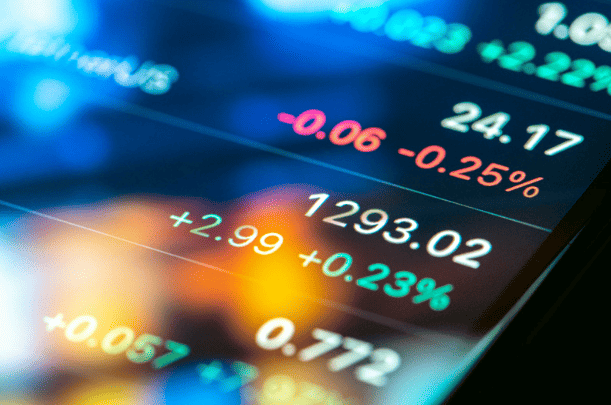
AI trading systems provide numerous benefits that can help traders achieve their financial goals more efficiently.
AI algorithms can process and respond to market changes instantly, offering traders the advantage of acting on new information without delay.
AI can follow trading rules with precision, reducing the likelihood of mistakes due to human error.
AI can assess risk factors and adjust portfolio allocations accordingly. For instance, it can limit exposure to high-risk assets or diversify portfolios to mitigate risks.
AI systems can automatically adjust trading strategies based on market conditions, ensuring that traders can stay ahead of trends without constant manual intervention.
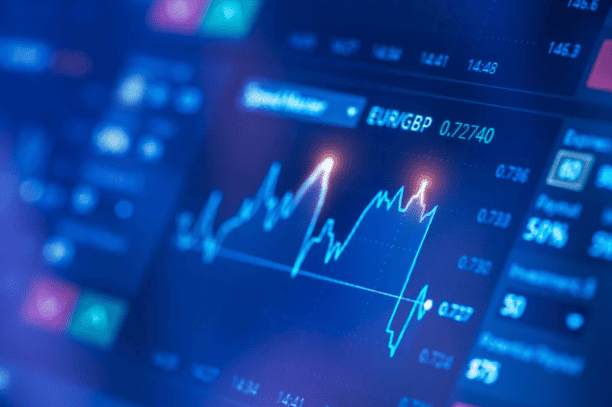
AI reduces the time and effort needed for market analysis.
AI eliminates emotional biases, such as fear or greed, that can lead to poor decisions.
AI allows for trading in global markets at all hours, making it suitable for volatile markets like forex and cryptocurrencies.
For those looking to start AI trading, here are some essential steps to consider:
Select a platform that supports AI trading tools, such as MetaTrader or QuantConnect, which offer a range of AI-compatible features.
Programming skills, particularly in Python, are essential for developing and customising AI trading algorithms.
Familiarise yourself with market structures, risk management principles, and trading strategies.
Create a trading algorithm and conduct thorough backtesting to ensure it performs well under different market conditions.
AI trading is constantly evolving, with new technologies and strategies emerging regularly. Future trends include:
AI combined with blockchain can increase transparency and security in trading.
Emerging technology that could revolutionise the speed and complexity of trading algorithms.
As AI systems become more advanced, traders can expect even more sophisticated tools for managing and executing trades.
As part of our expansion into the UAE region, Algo Forest is proud to have been invited by the Abu Dhabi Investment Office (ADIO), a milestone that reflects our role as a growing force in the AI and fintech sectors.
We’re also excited to announce that we will be exhibiting at GITEX Global 2024, taking place at the Dubai World Trade Centre from October 14–18, 2024. Our team will be on-site to showcase the power of AI-driven algorithmic trading systems and demonstrate how algo trading is shaping the future of financial markets.
This event supports our broader mission to make algorithmic trading accessible to everyone in the UAE, whether you're a retail trader or an institutional investor.
Whether you're in Dubai, Abu Dhabi, or anywhere across the UAE, Python trading opens up a powerful new way to engage with the markets.
Visit our booth at GITEX Global 2024 to see our solutions in action — or get started online today.
Learn more at AlgoForest.com and discover how our online algorithmic trading courses can help you turn code into capital.
Q1. What is AI trading?
AI trading uses artificial intelligence to analyse market data, identify trends, and execute trades automatically, aiming to improve trading efficiency and reduce errors.
Q2. How much capital is required to start AI trading?
While this varies, beginners in Hong Kong might start with a smaller investment of HK$10,000-HK$50,000, depending on the trading platform and chosen markets.
Q3. What types of strategies can be implemented with AI trading?
Common strategies include momentum trading, mean reversion, and high-frequency trading. Traders can customise AI algorithms to suit their preferred strategy.
Q4. Is AI trading suitable for beginners?
Yes, beginners can start with user-friendly AI trading platforms. However, some knowledge of programming and trading fundamentals is helpful for effective use.
Q5. What are the risks associated with AI trading?
AI trading involves risks, such as reliance on data quality and market volatility. It's essential to regularly monitor and adjust AI strategies.
Q6. Can AI be used for forex and cryptocurrency trading?
Yes, AI is particularly useful in volatile markets like forex and cryptocurrencies, as it can react swiftly to price changes and execute trades in real-time.
Q7. Do I need programming skills to use AI trading?
Basic programming skills, especially in Python, are helpful but not essential, as many platforms offer pre-built algorithms and user-friendly interfaces.
Explore the world of EA trading on MT4 and MT5 platforms. Learn how to set up, customise, and optimise Expert Advisors, with strategies and tips to enhance your trading performance. Discover how to trade smarter today!
EA trading, short for Expert Advisor trading, refers to the use of automated trading systems on popular platforms like MetaTrader 4 (MT4) and MetaTrader 5 (MT5). Expert Advisors (EAs) are custom programs that automate trading strategies, enabling traders to execute trades and manage portfolios without manual intervention.
Whether you’re new to trading or an experienced investor, understanding how to leverage EAs on MT4 and MT5 can streamline your trading processes and help you achieve consistent results.
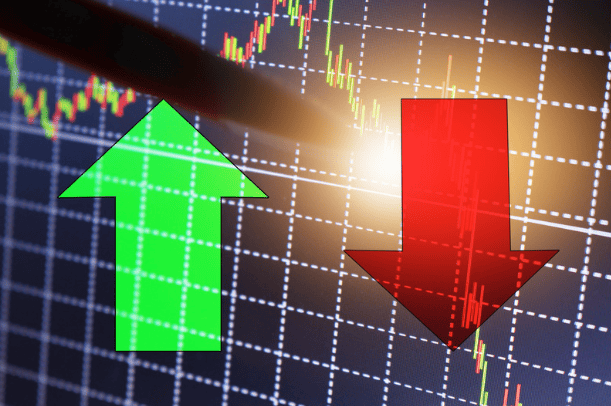
EA trading on MT4 and MT5 is powered by scripts written in MQL4 or MQL5, the proprietary programming languages of these platforms. These scripts automate tasks like analysing market conditions, generating signals, and executing trades based on predefined criteria.
Here’s a step-by-step guide to how EA trading works:
Download pre-built EAs from the MetaTrader Market or community forums.
Alternatively, create your own EA using MQL4/MQL5.
Place the EA file in the “Experts” folder of your MetaTrader directory.
Restart the platform and locate the EA under the "Navigator" panel.
Drag the EA onto the desired chart.
Adjust the input settings, such as lot size, stop loss, and take profit levels.
Activate the "AutoTrading" button on the toolbar.
The EA will start executing trades based on its programmed strategy.
Use the "Journal" and "Experts" tabs to track the EA’s activity and debug any issues.
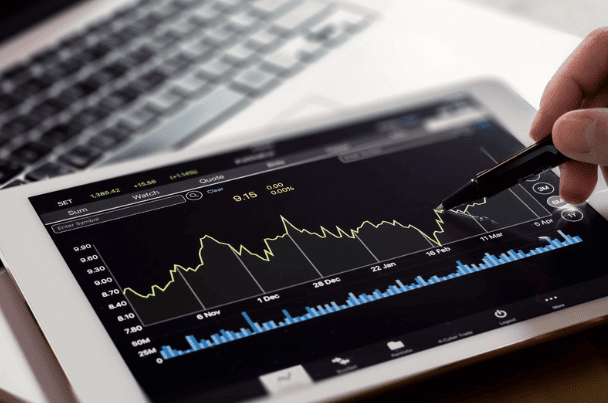
EAs execute trades faster than manual trading, ensuring timely responses to market movements.
Unlike human traders, EAs can operate continuously, capturing opportunities in global markets around the clock.
Both MT4 and MT5 offer robust backtesting tools, allowing traders to test EA performance using historical data.
EAs can be tailored to suit any trading style, from scalping to swing trading.
EAs strictly follow their programming, eliminating emotional biases like fear and greed.
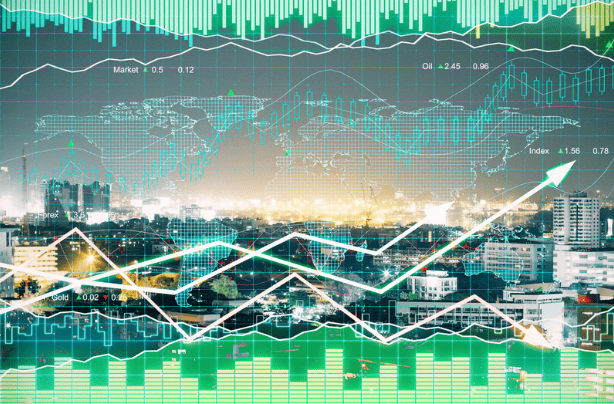
Use the "Strategy Tester" to simulate EA performance on historical data.
Adjust parameters to improve results.
Run the EA on a demo account to evaluate its performance in real-time conditions.
Experiment with input variables like stop-loss levels and risk percentage to maximise returns.
Deploy your EA on a Virtual Private Server (VPS) to ensure uninterrupted trading.
EA trading on MT4 and MT5 provides traders with powerful tools to automate and optimise their strategies. By understanding the platforms, leveraging backtesting tools, and implementing sound risk management practices, you can make the most of Expert Advisors and take your trading to the next level.
If you’re exploring any expert advisors to trade, the key to success lies in continuous learning and diligent testing. Begin your journey into EA trading today!
Discover the CCY Power Indicator, your ultimate edge in identifying strong and weak currencies in real time.
Whether you're a beginner or a pro, this powerful tool simplifies decision-making and improves your performance when trading currencies and gold.
👉 Get CCY Power and start making informed trades today.
Whether you are a beginner or an experienced trader, you can start learning about algorithmic trading by joining our FREE online course.
To get started, visit https://algoforest.my/.
A: No, EAs written for MT4 are not compatible with MT5 due to differences in their programming languages (MQL4 vs MQL5). However, some developers offer versions for both platforms.
A: Yes, the MetaTrader Market and online forums offer free EAs for various strategies. However, test them thoroughly before live trading.
A: EA trading can be suitable for beginners if they start with pre-built EAs and demo accounts. Learning to customise or develop EAs requires advanced skills.
A: The required capital depends on the EA’s strategy. Scalping EAs may require higher balances to handle frequent trades, while trend-following EAs can operate with smaller amounts.
Learn about how Python trading with its efficient tools and libraries. Learn key concepts, strategies, and applications of Python trading to enhance your algorithmic trading performance.
Python trading refers to the use of the Python programming language to develop, test, and execute trading algorithms in financial markets. Python is widely embraced due to its simplicity, extensive libraries, and compatibility with financial data tools.

With the UAE, particularly Dubai and Abu Dhabi, becoming global centers for fintech innovation, Python-based algorithmic trading has seen growing interest among traders seeking advanced, automated trading solutions.
Python's syntax is easy to learn, making it accessible to both beginners and professionals. With rich libraries like Pandas andNumPy, Python simplifies data analysis and visualisation.
Python allows traders to automate strategies, analyse historical data, and execute trades with precision and speed, reducing human error and enhancing efficiency.
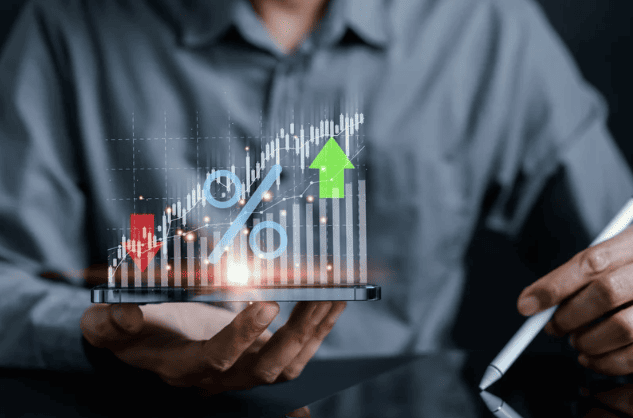
Python can handle various trading instruments, including stocks, forex, and cryptocurrencies, and is scalable for high-frequency trading operations.
Popular Python libraries such as:
Python has a massive global community, ensuring abundant resources, tutorials, and support for developers.
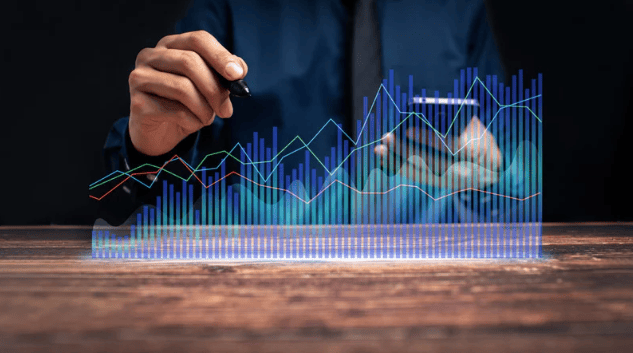
Python can retrieve and process large datasets from APIs, financial websites, and CSV files. For example, Using APIs like Alpha Vantage or Yahoo Finance to access historical and real-time data.
Python tools like Backtrader enable traders to test strategies against historical data to evaluate their performance. Key metricssuch as Sharpe Ratio, Drawdowns, and CAGR (Compound Annual Growth Rate).
Python can integrate with brokerage APIs like Interactive Brokers or Alpaca for live trading. This ensures trades are executed as per predefined conditions, such as price thresholds or technical indicators.
Python algorithms help traders implement risk controls, such as stop-loss orders, portfolio diversification, and dynamic rebalancing.
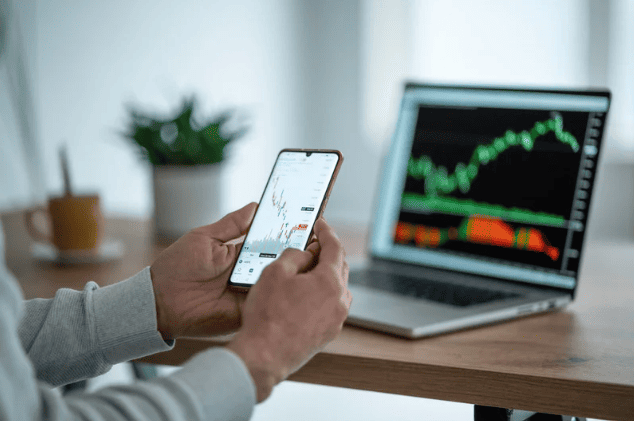
Assumes prices will revert to their average. Python algorithms identify overbought or oversold conditions using indicators like RSI or Bollinger Bands.
Focuses on trends, where Python identifies assets with strong upward or downward momentum based on moving averages or MACD.
Python can scan multiple exchanges for price discrepancies in real-time, executing buy-and-sell orders to capitalise on differences.
Python scripts execute numerous trades in fractions of a second, leveraging market inefficiencies.
Familiarise yourself with Python syntax, libraries, and IDEs like Jupyter Notebook or VS Code.
Gain knowledge of market structures, trading instruments, and technical analysis.
Use historical data to develop trading strategies and validate their effectiveness with backtesting tools.
Set up API connections with brokers to execute live trades. Popular APIs include Alpaca, Interactive Brokers, and Binance.
Unpredictable market movements can disrupt even the most sophisticated algorithms.
Over-reliance on historical data during backtesting can lead to poor real-world performance.
Developing Python trading systems requires programming skills and an understanding of algorithms.
Maintaining servers and data subscriptions can be costly for individual traders.

As part of our expansion into the UAE region, Algo Forest is proud to have been invited by the Abu Dhabi Investment Office (ADIO), a milestone that reflects our role as a growing force in the AI and fintech sectors.
We’re also excited to announce that we will be exhibiting at GITEX Global 2024, taking place at the Dubai World Trade Centre from October 14–18, 2024. Our team will be on-site to showcase the power of Python-driven algorithmic trading systems and demonstrate how automation is shaping the future of financial markets.
This event supports our broader mission to make algorithmic trading accessible to everyone in the UAE, whether you're a retail trader or an institutional investor.
Whether you're in Dubai, Abu Dhabi, or anywhere across the UAE, Python trading opens up a powerful new way to engage with the markets.
Visit our booth at GITEX Global 2024 to see our solutions in action or get started online today.
Learn more at AlgoForest.com and discover how our online algorithmic trading courses can help you turn code into capital.
Q1. What is Python trading?
Python trading uses the Python programming language to automate and execute trading strategies in financial markets.
Q2. Why is Python popular for trading?
Python's simplicity, extensive libraries, and flexibility make it ideal for algorithmic trading and data analysis.
Q3. Can beginners use Python for trading?
Yes, Python's user-friendly syntax and resources make it accessible for beginners, though a basic understanding of programming and markets is recommended.
Q4. What are the best Python libraries for trading?
Popular libraries include Pandas for data manipulation, NumPy for analysis, and Backtrader for strategy backtesting.
Q5. Are there risks involved in Python trading?
Yes, risks include market volatility, technical failures, and overfitting during backtesting.
Q6. What skills are required for Python trading?
Basic programming in Python, financial knowledge, and an understanding of trading platforms are essential.
The essential elements of Forex trading, from understanding currency pairs to advanced strategies. Learn how to effectively trade in the world’s largest financial market and manage the associated risks with confidence.
Forex trading, also known as foreign exchange trading, involves the exchange of currencies in a decentralised global market. Unlike traditional stock markets, forex trading takes place over-the-counter (OTC) with no central exchange. The forex market operates 24 hours a day, five days a week, offering unparalleled flexibility to traders around the world. This constant operation allows traders to react swiftly to global events, economic data releases, and geopolitical developments, making it one of the most dynamic financial markets.

With the UAE, especially Dubai and Abu Dhabi, emerging as global hubs for fintech innovation, traders in the region are increasingly embracing automated and algorithmic solutions to stay competitive in today’s fast-paced forex markets.
The forex market is the largest financial market in the world, with a daily trading volume exceeding $6 trillion. This massive volume not only provides liquidity but also presents countless trading opportunities. Forex trading is accessible to a wide range of participants, from individual retail traders to large financial institutions. Its accessibility, combined with the potential for profit in both rising and falling markets, makes forex trading a popular choice among traders.
The forex market is driven by various participants, each playing a crucial role in its operation. These participants include:
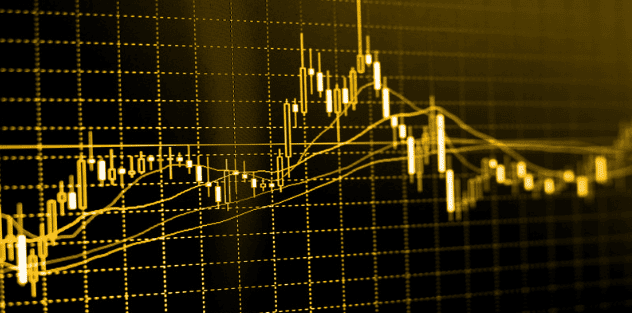
Currencies are traded in pairs, meaning the value of one currency is relative to another. The most traded currency pairs are known as Major Pairs, which include the US Dollar paired with other major currencies, such as the Euro (EUR/USD), British Pound (GBP/USD), and Japanese Yen (USD/JPY). These pairs are popular due to their high liquidity and tight spreads.
These pairs do not include the US Dollar but involve other major currencies, such as EUR/GBP or GBP/JPY. While still liquid, minor pairs often have wider spreads than major pairs.
Exotic pairs consist of a major currency paired with a currency from an emerging or smaller economy, such as USD/TRY (US Dollar/Turkish Lira) or EUR/SEK (Euro/Swedish Krona). These pairs tend to have higher volatility and wider spreads.
Leverage is a double-edged sword in forex trading. It allows traders to control larger positions with a smaller amount of capital, amplifying both potential profits and losses. For example, with a leverage ratio of 100:1, a trader can control a $100,000 position with just $1,000. However, this also means that a small adverse movement in the market can lead to significant losses.
Margin is the amount of money required to open a leveraged position. It acts as collateral for the trade. Understanding how to manage margin and leverage is crucial for maintaining a healthy trading account and avoiding margin calls, where the broker requires additional funds to keep positions open.
A pip (percentage in point) is the smallest price movement in a currency pair, typically 0.0001 for most major pairs. Pips are used to measure price changes and calculate potential profits or losses.
Forex is traded in lots, which represent the size of a trade. A standard lot is 100,000 units of the base currency, but smaller lot sizes are available, such as mini lots (10,000 units) and micro lots (1,000 units), making forex trading accessible to different levels of traders.
The spread is the difference between the bid (buy) and ask (sell) prices of a currency pair. It represents the cost of trading, with tighter spreads being more cost-effective for traders. Spreads can widen during periods of high volatility or low liquidity.
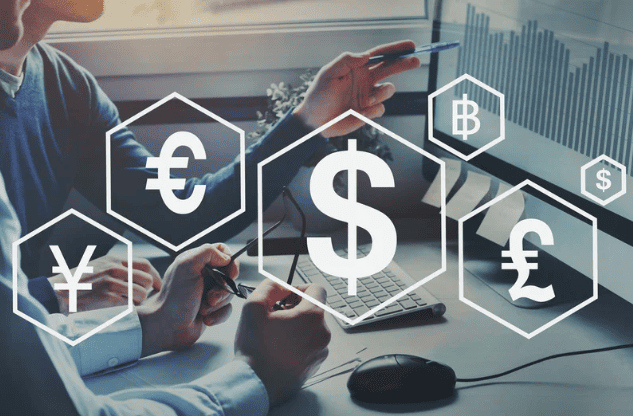
Technical analysis is the study of historical price movements and patterns to forecast future price movements. It is a fundamental approach in forex trading, relying heavily on charts and technical indicators. Key technical analysis tools include:
Moving averages smooth out price data to create a trend-following indicator. The most commonly used moving averages are the simple moving average (SMA) and the exponential moving average (EMA). Traders use them to identify trends and potential entry or exit points.
Bollinger Bands consist of a moving average and two standard deviation lines. They help traders identify overbought or oversold conditions and potential price reversals.
The RSI is a momentum oscillator that measures the speed and change of price movements. It ranges from 0 to 100 and is used to identify overbought (above 70) or oversold (below 30) conditions.
This indicator compares a particular closing price of a currency pair to a range of its prices over a certain period. It is used to generate overbought and oversold signals, helping traders anticipate potential market reversals.
Fundamental analysis involves evaluating economic data, news events, and geopolitical developments to assess their impact on currency values. Key factors include:
Central banks use interest rates to control inflation and influence economic activity. Higher interest rates attract foreign capital, leading to currency appreciation, while lower rates may result in currency depreciation.
Indicators such as Gross Domestic Product (GDP), employment rates, and inflation data provide insights into a country’s economic health. Positive data typically strengthens a currency, while negative data can weaken it.
Political instability, elections, trade disputes, and natural disasters can all affect currency values. Traders must stay informed about global events that could impact the forex market.
Successful forex trading requires the development and application of well-thought-out strategies. Some of the most popular strategies include:
Scalping involves making multiple trades throughout the day to capture small price movements. Scalpers rely on high leverage and tight spreads to make quick profits, often holding positions for just seconds or minutes.
Day traders open and close positions within the same trading day, avoiding overnight risk. They focus on short-term price movements and use technical analysis to identify trading opportunities.
Swing traders aim to capture price swings in the market by holding positions for several days or weeks. This strategy requires patience and a solid understanding of technical and fundamental analysis.
Position trading is a long-term strategy where traders hold positions for weeks, months, or even years. This approach is based on macroeconomic trends and requires a deep understanding of the fundamental factors driving the market.
The carry trade strategy involves borrowing funds in a currency with a low-interest rate and investing in a currency with a higher interest rate. The profit comes from the interest rate differential, but the strategy also carries currency risk.
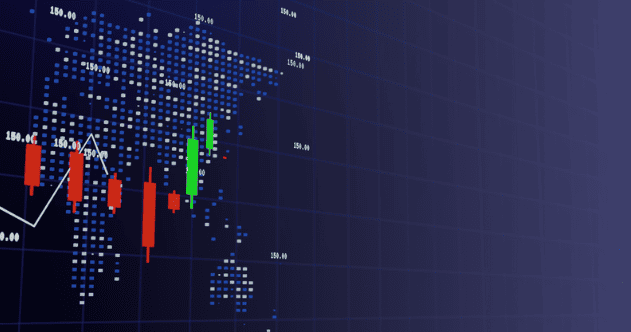
The forex market’s 24-hour operation is one of its most significant advantages. Unlike stock markets, which have set trading hours, the forex market allows traders to trade continuously from Monday to Friday. This is possible because trading sessions overlap across different regions, including Asia, Europe, and North America. Traders can choose to trade during the most active sessions, such as the London-New York overlap, to take advantage of higher liquidity and tighter spreads.
Forex trading is known for its high liquidity, particularly in major currency pairs. High liquidity ensures that traders can enter and exit positions quickly without significant price fluctuations. This liquidity is especially important for large institutional traders who need to execute sizable orders without moving the market.
Volatility, while often viewed as a risk, also presents opportunities for profit. The forex market’s volatility is driven by various factors, including economic data releases, geopolitical events, and market sentiment. Traders who can effectively manage volatility can benefit from substantial price movements.
Forex trading offers the flexibility to profit in both rising and falling markets. Unlike the stock market, where investors typically buy and hold assets in anticipation of price appreciation, forex traders can go long (buy) or short (sell) depending on their market outlook. This ability to trade in both directions provides more opportunities for profit, regardless of the overall market trend.
Compared to other financial markets, forex trading generally has lower transaction costs. This is particularly true for major currency pairs, where spreads are usually tight due to high liquidity. Lower transaction costs make forex trading more accessible to a broader range of participants, from retail traders to large financial institutions.
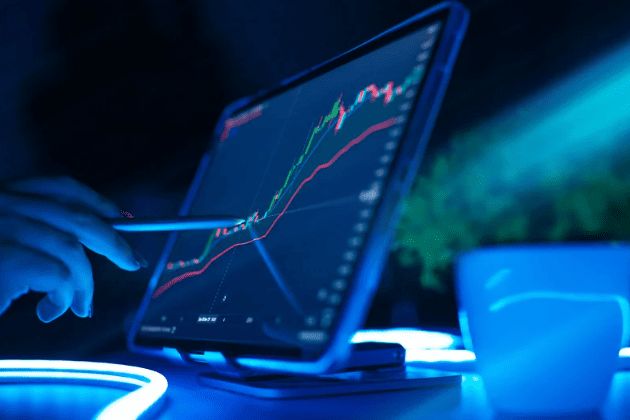
While volatility creates trading opportunities, it also increases the risk of sudden price movements that can lead to losses. Traders must develop strategies to manage and mitigate these risks effectively. Some risk management techniques include:
A stop-loss order automatically closes a position when the price reaches a predetermined level, limiting potential losses.
Proper position sizing involves calculating the appropriate amount of capital to risk on each trade based on the trader’s risk tolerance and the size of their trading account.
Diversifying across different currency pairs or asset classes can help spread risk and reduce the impact of adverse price movements in a single market.
Leverage amplifies both potential profits and losses. While it allows traders to control larger positions with less capital, excessive leverage can quickly deplete a trading account in the event of a loss. To avoid the dangers of over-leverage, traders should:
Reducing the leverage ratio can help manage risk more effectively. Many experienced traders use leverage ratios of 10:1 or lower.
Setting clear risk management rules, such as limiting the percentage of capital risked on each trade, can help protect against significant losses.
Economic events and data releases can have a profound impact on currency prices. Traders must stay informed about key events, such as central bank meetings, employment reports, and GDP releases, that can influence market sentiment and cause sharp price movements. Understanding the timing and potential impact of these events is essential for managing risk and making informed trading decisions.
Forex trading is not only a test of analytical skills but also a psychological challenge. Traders must manage their emotions, such as fear and greed, which can lead to impulsive decisions and costly mistakes. Developing discipline and sticking to a well-defined trading plan are crucial for long-term success. Some psychological challenges include:
The temptation to trade frequently in the hope of making quick profits can lead to overtrading, which increases transaction costs and risk.
After a losing trade, some traders may attempt to recover losses by taking on more risk, often leading to further losses.
The fear of missing out on potential profits can lead to hasty decisions and poor trade execution.
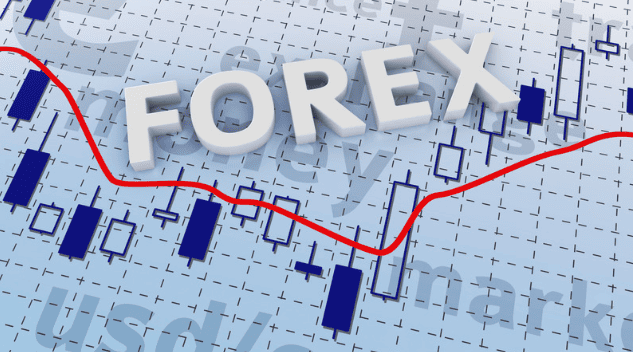
MetaTrader platforms, particularly MetaTrader 4 (MT4) and MetaTrader 5 (MT5), are among the most popular forex trading platforms globally. They offer a wide range of features, including:
cTrader is known for its user-friendly interface and advanced trading features. It is particularly popular among traders who require:
TradingView is a cloud-based platform that offers powerful charting tools and social trading features. It is widely used for its:
Developed by TD Ameritrade, Thinkorswim is a sophisticated trading platform offering:

As part of our expansion into the UAE region, Algo Forest is proud to have been invited by the Abu Dhabi Investment Office (ADIO), a recognition of our growing presence in the AI and fintech sectors.
We’re also excited to announce that we will be exhibiting at GITEX Global 2024, happening at the Dubai World Trade Centre from October 14–18, 2024. Our team will be showcasing our latest AI-powered algorithmic trading solutions, aimed at empowering traders with cutting-edge automation, advanced analytics, and real-time strategies.
This milestone aligns with our broader mission to make algorithmic trading accessible to everyone in the UAE, equipping traders with the tools and education needed to succeed in one of the world’s most dynamic markets.
Forex trading offers a wealth of opportunities for those willing to invest time in learning and mastering the market. By understanding the core concepts, developing effective strategies, and managing risks diligently, traders can navigate the complexities of the forex market and work towards achieving their financial goals. Whether you are a beginner or an experienced trader, continuous education, discipline, and a well-defined trading plan are key to long-term success in forex trading.
If you're in the UAE and interested in transforming your trading approach, we invite you to connect with us at GITEX Global 2024 or begin your journey online from anywhere.
Visit AlgoForest.com to explore our online algorithmic trading courses and learn how automation and AI can elevate your trading performance.
Forex trading can be suitable for beginners, but it requires a commitment to learning and risk management. New traders should start by:
The best times to trade forex are during periods of high market activity, particularly when trading sessions overlap. For example:
The amount of capital needed to start trading forex depends on the trader’s goals, risk tolerance, and the broker’s requirements. While some brokers allow trading with as little as $100, it is recommended to start with a larger amount, such as $1,000 to $5,000, to effectively manage risk and accommodate potential losses.
No trading strategy can guarantee success in forex trading. The forex market is inherently unpredictable, and even the most well-developed strategies can lead to losses. Success in forex trading requires a combination of:
Risk management is crucial in forex trading. Some key risk management practices include:
Explore the basics of program trading, its strategies, and how it automates trading decisions. This guide will help you understand program trading and how to leverage it to improve your trading performance.
Program trading refers to the use of computer algorithms to execute trades based on predefined criteria. It is widely used in financial markets to automate trading processes, minimise human error, and optimise trading speed. Unlike manual trading, which is time-consuming and prone to human biases, program trading relies on data and mathematical models to make precise trading decisions.

With the UAE, especially Dubai and Abu Dhabi, becoming a hub for fintech and AI-driven solutions, traders in the region are increasingly turning to automated and algorithmic trading to stay competitive in today’s volatile markets.
Key advantages include:
Reduces the need for manual intervention by executing orders automatically.
Program trading can execute large orders within milliseconds, capturing market opportunities faster than human traders.
Algorithms eliminate emotional biases and follow preset rules, ensuring consistent trading execution.
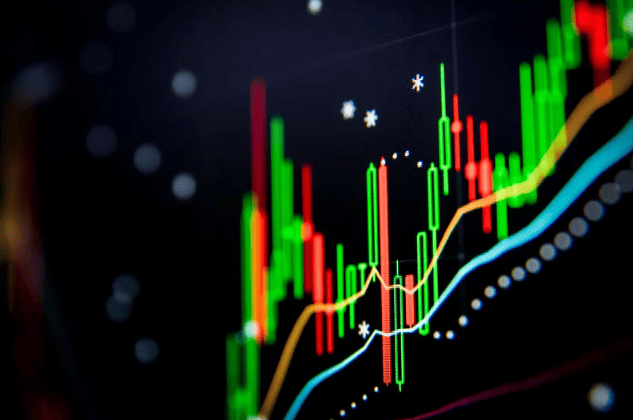
Program trading involves multiple steps, each designed to optimise trading efficiency and performance.
The process begins with collecting data from various sources, including market prices, trading volumes, and economic indicators. This data is then analysed to identify trends and opportunities for profitable trades.
Traders use mathematical models to develop strategies that can be automated. Popular strategies include:
Arbitrage: Exploiting price differences between markets to make a profit.
Index Tracking: Buying or selling stocks to replicate the performance of a market index.
Pair Trading: Taking long and short positions on two related stocks to profit from their price movements.
Once a strategy is developed, it is coded into an algorithm. The algorithm is programmed to monitor market conditions and execute trades based on predefined criteria. For example, if the price of a stock falls below a certain level, the algorithm can automatically buy it.
Program trading systems continuously monitor the market and execute trades as soon as the set conditions are met. Traders can also set risk management rules, such as stop-loss orders, to protect their investments.
Program trading is widely used across different financial markets due to its versatility and efficiency.
In the stock market, program trading is used to automate large trades, allowing institutional investors to buy or sell large quantities of stocks without significantly affecting market prices.
Program trading is effective in the forex market, where rapid price fluctuations require quick decision-making. Algorithms can predict currency pair movements and execute trades within seconds.
For commodities like oil, gold, and agricultural products, program trading systems can analyse historical data and forecast price movements, helping traders make more informed decisions.
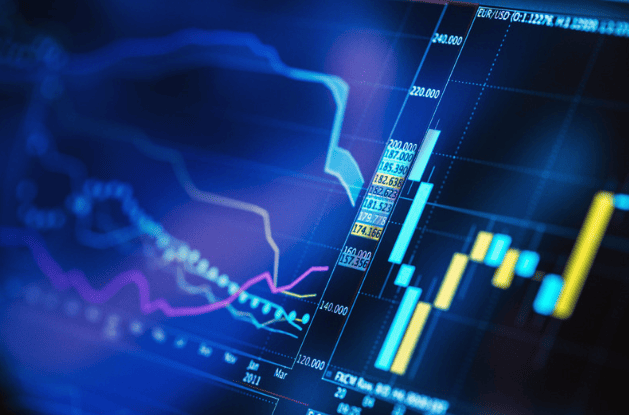
Program trading systems can process vast amounts of data and react to market changes instantly. This speed advantage is particularly useful in fast-moving markets like forex and cryptocurrencies.
One of the key benefits of program trading is its ability to incorporate risk management into trading strategies. For instance, algorithms can automatically adjust positions based on market volatility or set stop-loss levels to minimise losses.
With program trading, traders can execute thousands of trades simultaneously, which is impossible for human traders. This scalability allows for more complex trading strategies to be implemented, increasing potential returns.
Program trading can identify assets that are trending upwards or downwards and execute trades to capitalise on these trends.
This strategy involves identifying assets that deviate from their historical mean and predicting that they will revert to the mean. Algorithms can execute trades when prices deviate beyond a certain threshold.
Program trading systems are capable of executing a high volume of trades in a short period, taking advantage of small price discrepancies in the market. This is particularly useful in markets like forex, where prices can change within milliseconds.
Automates the trading process, reducing the time needed for analysis.
Removes emotional biases, such as fear or greed, that can impact trading decisions.
Reduces transaction costs by optimising the execution of trades.
Select a platform that supports program trading, such as MT4 or MT5, which offer advanced features for implementing trading algorithms.
Basic programming skills, especially in Python, are beneficial for developing customised trading algorithms.
Conduct thorough backtesting to evaluate the performance of your trading strategies under various market conditions.
Ensure that your algorithms include risk management features, such as stop-loss orders and position sizing, to protect your investments.

As part of our expansion into the UAE region, Algo Forest is proud to have been invited by the Abu Dhabi Investment Office (ADIO), a recognition of our impact on the fintech and AI ecosystem.
We’re also excited to announce that we will be exhibiting at GITEX Global 2024, held at the Dubai World Trade Centre from October 14–18, 2024. At the event, we’ll showcase our latest AI-driven algorithmic trading programmes, offering traders a firsthand look into the future of automated trading.
This is a major milestone as we continue our vision to make algorithmic trading accessible to everyone in the UAE, providing tools and education that empower traders at every level.
If you're based in the UAE and curious about the future of trading, we’d love to meet you at our GITEX 2024 booth or you can get started right now from anywhere.
Visit algoforest.com to explore our online algorithmic trading courses and discover how AI and automation can transform your trading journey.
Q1. What is program trading?
Program trading uses algorithms to automate the execution of trades based on predefined rules, enhancing trading efficiency and speed.
Q2. How much capital do I need to start program trading?
For beginners in Hong Kong, starting with HK$20,000-HK$50,000 is recommended, depending on the platform and chosen strategies.
Q3. Can program trading be used for forex trading?
Yes, program trading is highly effective in the forex market due to its speed and ability to handle large trading volumes.
Q4. Do I need coding skills to get into program trading?
While coding skills in languages like Python are helpful, many platforms offer user-friendly interfaces and pre-built algorithms.
Q5. What are the risks associated with program trading?
The main risks include reliance on data accuracy, market volatility, and potential regulatory issues. Regular monitoring is essential to ensure your trading strategies remain effective.
Q6. Can program trading be combined with AI?
Yes, integrating AI into program trading can enhance decision-making by analysing complex data sets, improving accuracy and profitability.
Explore Algorithmic Trading with our comprehensive guide. Uncover essential strategies, explore the best platforms, and understand the benefits and challenges. Whether you're a beginner or experienced trader, Algo Forest has everything you need to start mastering algo trading today!
Algorithmic trading is transforming the financial markets by automating trading processes with advanced algorithms. This trading method uses computer programs to execute orders at speeds and frequencies that are impossible for a human trader to match. Whether you're a seasoned investor or a beginner, understanding algorithmic trading can help you optimise your trading strategies and increase your market efficiency.

With the UAE, especially Dubai and Abu Dhabi, becoming a hub for fintech and AI-driven solutions, traders in the region are increasingly turning to automated and algorithmic trading to stay competitive in today’s volatile markets.
For beginners, you can also check "Basics of Algorithmic Trading: Concepts and Examples" for more insights into traditional and automated trading methods.
At its core, algorithmic trading is driven by complex mathematical models and high-speed computational processes. Traders or programmers develop algorithms based on specific strategies like trend following, arbitrage, or market making. These algorithms then monitor the market and automatically execute trades when conditions align with their programmed criteria.
The process involves several key components:
Data Collection: Algorithms analyse historical and real-time market data to identify patterns and opportunities.
Signal Generation: Based on the data, algorithms generate signals that indicate when to buy or sell.
Execution: Once a signal is generated, the algorithm executes the trade.
Risk Management: Algorithms also include risk management features, such as stop-loss orders, to protect against significant losses.
If you're interested in data analysis tools, platforms like Yahoo Finance or TradingView are great resources for monitoring real-time market data.
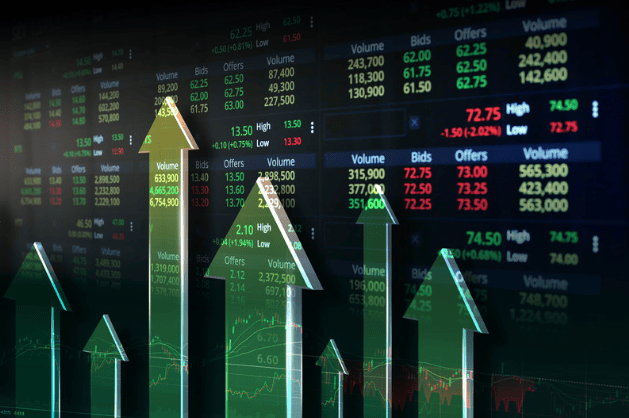
Algorithmic trading executes trades at lightning-fast speeds, often measured in milliseconds. This rapid execution can be critical in capitalising on short-lived market opportunities. Unlike human traders, algorithms can process vast amounts of data and make decisions almost instantaneously.
Trading can be emotionally challenging, leading to impulsive decisions driven by fear or greed. Algorithmic trading eliminates these emotions from the process, ensuring that trades are executed based solely on predefined criteria. This leads to more consistent and disciplined trading.
Algorithms execute trades with precision, minimising human error. For example, an algorithm can be programmed to buy or sell a commodity like gold or oil only if the price hits a specific set value, based on indicators such as volume, stochastic oscillators, or moving averages. This ensures that trades are carried out exactly as intended, reducing the risk of mistakes that could occur with manual entry.
Algorithmic trading allows traders to backtest their strategies using historical data. By analysing how a strategy would have performed in the past, traders can optimise their algorithms to improve future performance. This reduces the likelihood of implementing untested or flawed strategies in live markets.
For advanced users, platforms like QuantConnect provide robust backtesting capabilities.
The efficiency of algorithmic trading can lead to lower transaction costs. Algorithms aim to execute trades at optimal prices, often splitting large orders into smaller ones to minimise market impact. This reduces slippage and ensures that the trader gets the most favourable execution.
Algorithms can manage multiple portfolios and execute trades across various asset classes simultaneously. This allows for greater diversification, as traders can take advantage of opportunities in different markets without spreading themselves too thin.
Algorithmic trading is heavily reliant on technology. Any issues with the software, hardware, or internet connectivity can lead to significant losses. For example, a server crash during a critical market movement could prevent the algorithm from executing trades, resulting in missed opportunities or unwanted exposure.
When optimising algorithms through backtesting, there’s a risk of overfitting. This occurs when the algorithm is too closely tailored to past data, making it less effective in live markets. An overfitted algorithm may perform well in backtests but fail to adapt to real-world market conditions.
High-frequency algorithmic trading has been implicated in causing flash crashes—sudden, severe market drops followed by rapid recoveries. The sheer volume of trades executed by algorithms can exacerbate market volatility, leading to extreme price swings.
Regulatory bodies are increasingly scrutinising algorithmic trading practices to prevent market manipulation. Additionally, there are ethical concerns about the use of high-frequency trading, which some argue gives institutional investors an unfair advantage over retail traders.
Developing a profitable algorithmic trading strategy requires significant technical expertise and financial resources. Traders need to have a deep understanding of both financial markets and programming. Additionally, maintaining and updating these algorithms can be costly.
Algorithmic trading strategies are often based on historical data. However, past performance is not always indicative of future results. Unpredictable market events or changes in market conditions can render an algorithm ineffective, leading to unexpected losses.
For more details on managing market risks, check out Investopedia's guide on risk management.
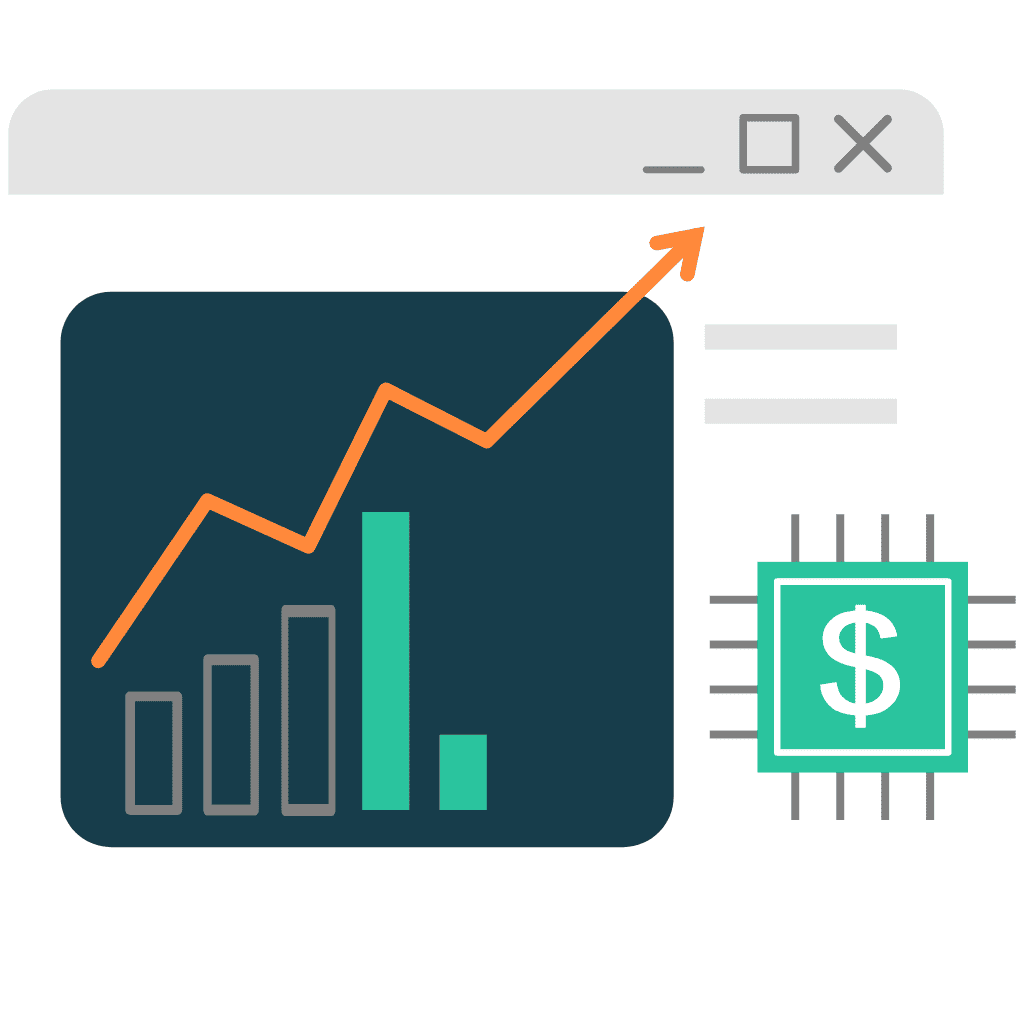
Algorithmic trading encompasses various strategies, each tailored to different market conditions and trading goals. Here are some of the most commonly used strategies:
This strategy involves following the market's momentum by buying when prices are rising and selling when they are falling. It relies on technical analysis indicators like moving averages.
Arbitrage strategies take advantage of price discrepancies between different markets or instruments. For instance, an algorithm might simultaneously buy and sell the same asset in different markets to profit from the price difference.
This strategy assumes that asset prices will revert to their historical averages over time. The algorithm identifies overbought or oversold conditions and executes trades accordingly.
Scalping is a high-frequency strategy that involves making small profits from tiny price movements. Algorithms execute a large number of trades in a short period, aiming for minimal gains per trade.
This strategy focuses on trading around market-moving events such as earnings reports, mergers, or economic announcements. The algorithm analyses the potential impact of these events and executes trades based on predicted outcomes.
Numerous tools and platforms are available to help traders implement algorithmic trading strategies. The available tools and platforms range from proprietary trading systems developed by financial institutions to commercial platforms designed for retail traders. Some popular platforms include:
MetaTrader: Widely used for forex trading, MetaTrader offers automated trading through Expert Advisors (EAs).
MultiCharts: A versatile platform supporting various asset classes, known for its advanced charting tools and backtesting capabilities.
QuantConnect: A cloud-based platform that supports multiple programming languages, allowing traders to design, backtest, and deploy algorithms in live markets.
NinjaTrader: Known for its robust trading engine, NinjaTrader supports both discretionary and automated trading strategies.
Each platform offers unique features, so it's essential to choose one that aligns with your trading strategy and technical expertise.

As part of our expansion into the UAE region, Algo Forest is proud to have been invited by the Abu Dhabi Investment Office (ADIO), a testament to our growing role in the AI and fintech space.
We’re also excited to announce that we will be exhibiting at GITEX Global 2024, taking place at the Dubai World Trade Centre from October 14–18, 2024. We’ll be showcasing our latest AI-powered algorithmic trading programmes to traders, investors, and technology leaders from around the world.
This milestone reflects our continued mission to make algorithmic trading accessible to everyone in the UAE region, supporting both beginner and experienced traders with cutting-edge automation and data-driven tools.
If you’re based in the UAE and looking to explore the future of trading, we invite you to visit our booth at GITEX Global 2024 or get started online today.
Learn more about our online algorithmic trading courses at algoforest.com and discover how AI and automation can transform your trading strategy.